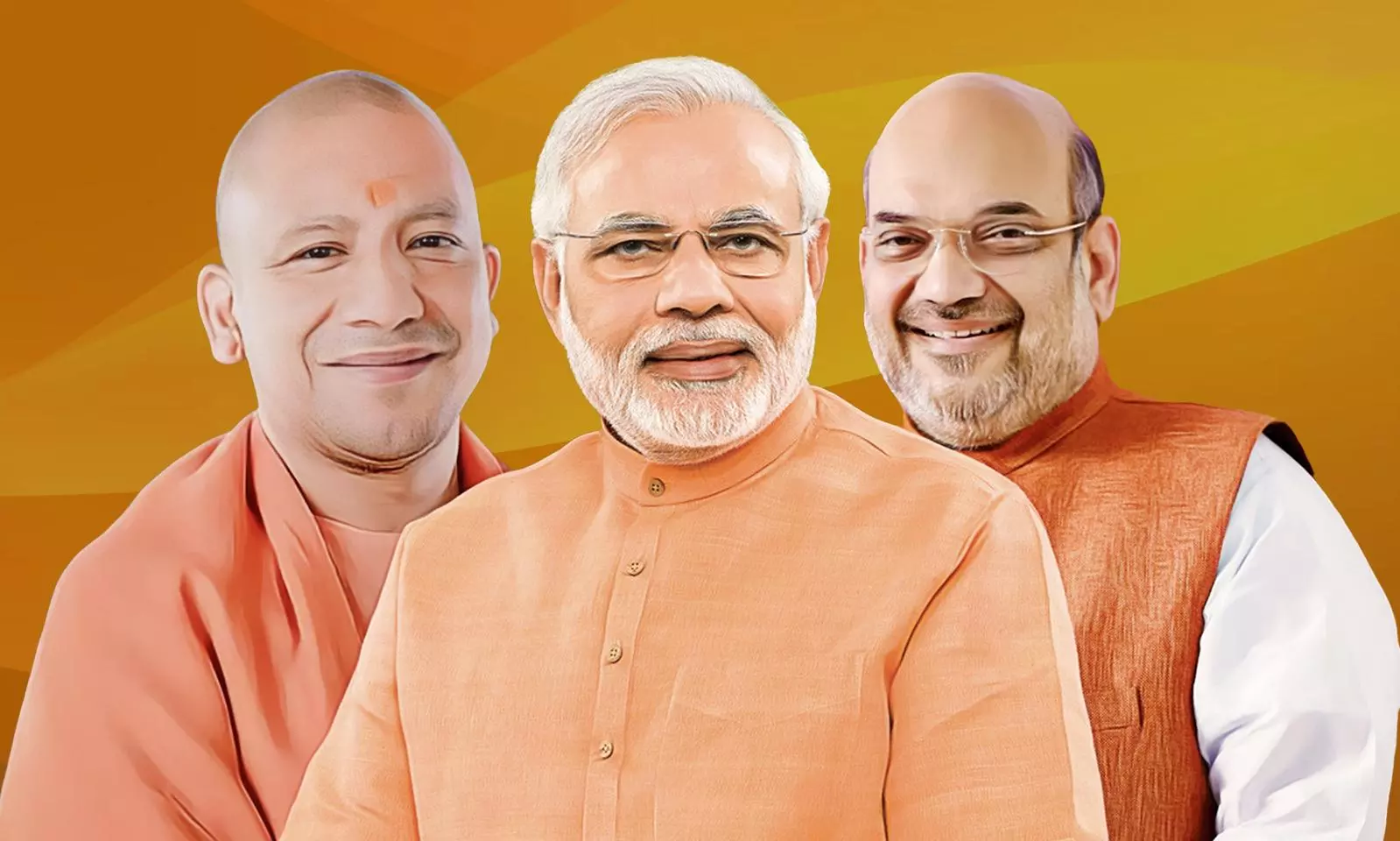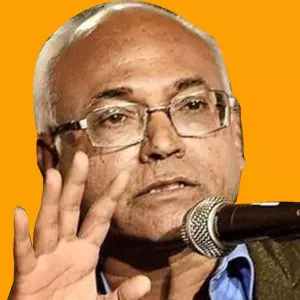
- Home
- India
- World
- Premium
- THE FEDERAL SPECIAL
- Analysis
- States
- Perspective
- Videos
- Sports
- Education
- Entertainment
- Elections
- Features
- Health
- Business
- Series
- In memoriam: Sheikh Mujibur Rahman
- Bishnoi's Men
- NEET TANGLE
- Economy Series
- Earth Day
- Kashmir’s Frozen Turbulence
- India@75
- The legend of Ramjanmabhoomi
- Liberalisation@30
- How to tame a dragon
- Celebrating biodiversity
- Farm Matters
- 50 days of solitude
- Bringing Migrants Home
- Budget 2020
- Jharkhand Votes
- The Federal Investigates
- The Federal Impact
- Vanishing Sand
- Gandhi @ 150
- Andhra Today
- Field report
- Operation Gulmarg
- Pandemic @1 Mn in India
- The Federal Year-End
- The Zero Year
- Science
- Brand studio
- Newsletter
- Elections 2024
- Events
- Home
- IndiaIndia
- World
- Analysis
- StatesStates
- PerspectivePerspective
- VideosVideos
- Sports
- Education
- Entertainment
- ElectionsElections
- Features
- Health
- BusinessBusiness
- Premium
- Loading...
Premium - Events

BJP govt is toying with two new agendas — Hinduism as Sanatana Dharma and India as Bharat; these have complex implications
The BJP government at the Centre is toying with two new ‘agendas’ — Hinduism as Sanatana Dharma and India as Bharat. With this, a full-scale Brahmin-Kshatriya Raj is expected to come back to India.
Narendra Modi, an Other Backward Class (OBC) Prime Minister, is forced to give up his Sabka Saath slogan. He and his ministers now appear to be talking about Sanatana Dharma and Bharat as election ‘agendas’. These are RSS’s long-term projects.
Sanatana actually means ‘traditionally old’ in all South Indian language usage. Dharma refers to varna dharmam — strict maintenance of caste order. It speaks about duties, not rights. The Indian caste system survived with such strict enforcement of duties for the productive castes. Whereas the Dwija castes — particularly Brahmins — are free to enjoy all the rights.
Dharma is not justice
Among the masses in the villages Sanatana Dharma was never known as Eternal Law, as the BJP leaders are projecting. It is understood as an outdated social order in common sense discourses. In the intellectual discourses of Mahatma Phule, Dr BR Ambedkar and Periyar Ramaswamy Naikar, Sanatana Dharma is another name for varna dharma. They have rejected all Brahminic definitions of many ancient Sanskrit usages.
Dharma in Sanskrit never was understood as justice. Nyaya was used as an equivalent word for justice. But most Brahmin writers now, particularly most RSS writers, keep giving misleading explanations, as if Dharma is ‘justice for all’. If Dharma is justice, how did caste and untouchability exist for so long in this country? What will explain the caste and untouchability and the brutality around those institutions?
The caste order in Sanatana times was Brahmin, Kshatriya, Vaishya and Shudra. In this order the Shudras were nothing but slaves. All ancient Sanskrit texts — the Vedas, Upanishads, Ramayana, Mahabharata, Arthashatra, and Manu Dharma Shastra — are fully aligned to promote Brahmin spiritual, social, economic and cultural power. The Kshatriyas were meant to rule, according to the rules framed by Brahmin saints and priests. The Brahmin saints and priests were never socially unified with Shudra/Dalit masses.
Priests, slaves, supervisors
What solutions does BJP have for Brahminic priestly exclusion-ism? The Vaishyas in Sanatana times were supervisors of Shudra slaves under the guidance of Brahmins, who were considered the Bhudevatas. Even now the Vaishyas with the systemic control over the business economy do not want to question the Brahmanic priestly control over religion.
Though the present Union government is said to be headed by Modi, an OBC, nobody knows where he places himself in the Sanatana order. Does he place himself in the Vaishya or Shudra varna?
No Shudra leader or thinker in modern times supported Sanatana Dharma. For example, Sardar Vallabhai Patel, who was one of the closest followers of Mahatma Gandhi, never said that he was a Sanatani. He said he was a Hindu. Gandhiji, a Baniya, was a strong supporter of Sanatana Dharma. He accepted that it was deeply integral to varna dharma and he wanted varna dharma to remain forever.
When BJP senior spokesperson Ravi Shankar Prasad defined Sanatana Dharma as ‘Eternal Law’ in a press conference in Delhi after Udayanidhi Stalin said Sanatana Dharma should be eradicated, he was in essence saying that varna dharma is eternal and they do not want the abolition of caste and untouchability. Similarly, Gandhiji only opposed untouchability, not the caste order per se.
Shah vs Yogi, Baniya vs Kshatriya
Is that the stand of OBC PM Modi, too? If he does so, the backwardness of the OBCs can never be removed. They can never become equals to Brahmins. That is not the aspiration of the Indian Constitution and the idea of ‘one person one vote’. If he continues to support Sanatana order, his OBC-ness will be understood as fake.
After 10 years of his rule the Brahmin-Kshatriya forces have taken ideological control of the system. Amit Shah, known as a Jain, a Baniya, is willing to play the Sanatani game with an eye on his future position and possible competition with a known Kshatriya, Yogi Adityanath.
Jains in ancient times were against Sanatana Dharma, and were promoters of non-violence and vegetarianism. Around that time the Brahmins and Kshatriyas were meat eaters. Mahatma Gandhi’s ideological roots lay in Jainism, not Sanatana Dharma. Both non-violence and vegetarianism were not integral to Sanatana Dharma.
The Kshatriyas under the guidance of Brahmin gurus were conducting wars, yagnas and animal sacrifice. They were all mainly meat eaters.
Sanatana Dharma is not Hinduism
The RSS for long wanted to name this country Hindustan. But given Muslim countries' names like Pakistan and Afghanistan, they must have thought that Hindustan would sound Islamic. And, it was a name given by Muslim rulers. Now they’ve settled for Kshatriya king Bharata’s name for the nation. That is certainly not to decolonise the nation.
If the name India is dropped because it is a colonial name, the religion’s name, Hinduism, is also both Muslim and British given. Maybe they wish to discard the name Hinduism and settle for Sanatana Dharma.
Certainly, Sanatana Dharma is not Hinduism. Hinduism was institutionalised as a religion of the Sindhu region and so named by Muslim rulers and, later, the European Indologists and scholars and British rulers with a lot of new co-options. Hinduism is a mix of several non-Aryan and Aryan textual deities like Dashavatara figures.
For example, Lord Ayyappa is worshipped pan-India, and he’s not Sanatana. He is known as a Hindu deity. In South India, there are huge temples for Lord Murugan and Lord Basava, who fought against Sanatanism and became gods. They are also being defined as Hindu, but not Sanatana.
Modi now walked into the trap of powerful Brahmin Sanatanists and Yogi Adityanath’s Kshatriya force. Yogi is a Sanatanist, a saint-politician with an ambition to the Prime Ministerial seat.
Religion and caste factionalism
The Sanatana Dharma agenda runs straight against all Shudras (reserved OBCs and unreserved farming communities like Jats, Yadavs, Gujjars, Patels, Marathas in the North and West, and Reddys, Kammas, Nairs, Lingayats and so on in the South). This does not work like anti-Muslim and anti-Christian agendas.
The Shudra/OBCs were easily mobilised under Brahmin, Baniya leadership against Muslims. The Sanatana agenda is against agrarian, artisanal and labouring masses. It is against all those who are perceived as Dravidians, not just DMK forces. It will reposition the normally known Hindu society into race and caste divisions.
Why does the RSS/BJP want to move away from the Muslim and Christian issues? This Sanatana agenda shifts from communalism via religions and will turn into a caste war in the future. They must have come to the conclusion that the Muslims and Christians are subdued and now the Shudra/Dalit/Adivasis must be taught a lesson. Udayanidhi’s statement is a pretext.
The clash of cultures
The RSS/BJP Dwija ideologues seem to have realised that their Muslim and Christian agendas have reached a dead end. Both Muslim and Christian international forces are organising themselves globally against those agendas. Those have become serious global human rights issues.
The ‘Clash of cultures’ in Asia with India as its central point will have serious implications for the RSS/BJP future. The Kashmir issue has reached its final point. To compensate, the RSS/BJP seem to have thought up the Sanatana Dharma question, and the idea of changing the country’s name to Bharat by entirely dropping ‘India’.
The Bharat vs India name conflict is mostly an intellectual issue, rather than a mass issue. But it will have implications to our understanding of history. Bringing back Sanatana Dharma will re-enslave all Shudra/Dalit/Adivasi masses in modern times.
Dasaratha’s progeny
The name India has most ancient Indus Civilisation roots, which do not refer to any king or queen or any race — Dravidian or Aryan. But the name Bharat points to a dynastic Kshatriya Aryan ruler of the Ramayana. If one son (Rama) of Dasharatha is now a God with a massive temple, and the country’s name is that of his other son Bharata, the whole nation is handed over to the Kshatriya dynasty.
The entire attack against dynasty rule by Modi and his ministers for the last 10 years becomes an eyewash with this kind of Sanatanism. The OBCs who have been voting for Modi in the North will certainly understand the new direction, particularly with the name of religion shifting from Hindu to Sanatana Dharma.
(The writer is former Director, Centre for the Study of Social Exclusion and Inclusive Policy, Maulana Azad National Urdu University, Hyderabad.)
(The Federal seeks to present views and opinions from all sides of the spectrum. The information, ideas or opinions in the articles are of the author and do not necessarily reflect the views of The Federal.)


